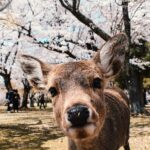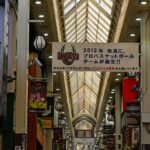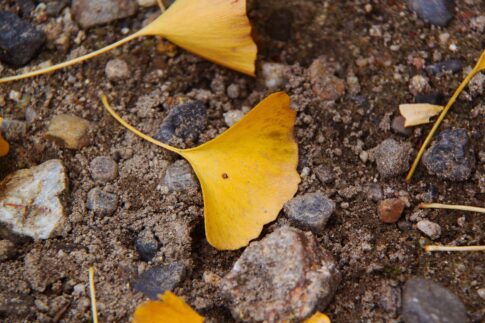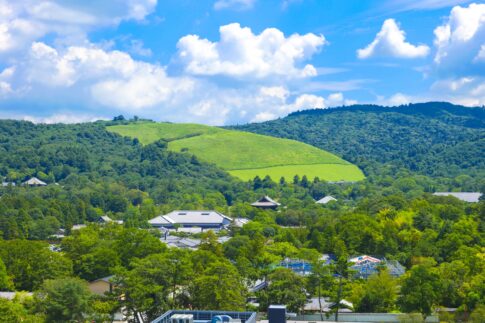The Nara Tokae, the Nara Lantern Festival is one of the famous events in Nara.
The Nara Tokae is a relatively new event that takes place in Nara Park on a midsummer night, with 20,000 candles lined up in various locations throughout the park to create a fantastic view of the park.
There are also live performances. It is so nostalgic and beautiful.
1. What is the Nara Tokae
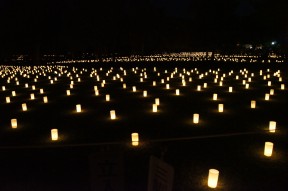
Nara flourished as a capital 1300 years ago.
The vast nature in Nara still preserves the vestiges of ancient Japan.
The gentle light of candles, which is appropriate for such a place, brings a sense of nostalgia and soothes the soul.
The “Nara Tokae” is a candlelit event that illuminates the prayers of the people gathered in Nara, a World Heritage site where time passes slowly and leisurely.
The Nara Tokae was born in 1999.
The candlelight of Nara, the ancient capital of Japan, has been blending into the city and people’s hearts in various ways.
For only 10 days in summer, candlelight flowers bloom in the vast greenery and history of Nara.
The “Toka” is a flower-shaped lump that forms at the end of the candle.
It is said to bring good luck.
During the festival, candles will be lit daily at a total of eight venues.
The main areas are: Kofukuji Temple and Sarusawa Pond Area, National Museum, Asakayagahara and Ukimido Area, and Ukigumo and Kasugano Area.
To this will be added the area around Todaiji’s Kagami-ike Pond on the 13th and 14th, and the approach to Kasuga Taisha Shrine on the 14th.
Each area will have its own special effects.
In the approach to temples and shrines, the lanterns will be placed along the paths; in ponds such as Sarusawa Pond, the lanterns will be placed around the ponds; and in the large Kasugano Park area, candles will be used to create giant pictures.
In Asakayagahara, bamboo objects are made and hung with light bulbs so that visitors can walk through them.
At Ukimido, candles line the parapets of the bridge and around the buildings, creating quite an atmosphere.
On weekends during the festival, there is “Honoakari Live” on a special stage in the park, where you can listen to performances of various musical instruments.
The performance in the pale light is fantastic.
Also, during this period, Kofukuji Temple extends the viewing hours of the National Treasure Hall and Tokondo, and the “Nara Tokae Noh Play” is held at the Nara Prefectural New Public Hall Nohgaku Hall.
Toka” is a flower-shaped lump of wax that sometimes forms at the end of the wick of a candle.
In Buddhism, it is considered to be a good omen.
The Nara Tokae itself is a completely non-religious event, and since it began in 1999, it has grown in scale and number of visitors, and has quickly become a major annual event.
It is an event where visitors can enjoy a different and fantastic view of Nara Park on a hot and humid summer evening in the Basin.
2. Main Viewing Spots
Ukigumoenchi
The Ukigumoenchi site can be said to be the main site of the Nara Lantern Festival, boasting a large area and a large number of candles.
The lights spreading all over the large venue look as if the Milky Way has landed on the ground.
Why don’t you cross the Milky Way with someone you love, just like the weaver princess and the Hikoboshi star?
At the Ukigumoenchi site, you can light your own candle (500 yen per guest, souvenir available).
The candle will appear to shine brightly while blending in with the surroundings.
Asakayagahara
At the Asakayagahara site, candles are scattered among bamboo objects, fantastically accentuating the shadows of the trees.
Once you step into the venue, a world opens up in which it seems as if a person from ancient times might wander in and out of the darkness.
It is also nice to stroll along Asakayagahara guided by the bamboo lights.
Ukimido
The most beautiful and popular venue is the Ukimido venue.
The golden hexagonal Ukimido and the pier that crosses it.
Candlelight frames the pond.
A small boat drifting on the surface of the water looks like a moon boat paddling through a forest of stars.
Please take a boat and drift leisurely on the surface of the water.
You will surely feel like a celestial being.
Kofukuji’s To-kondo Hall and five-story pagoda are illuminated
The northern approach leading to them is illuminated by soft candlelight, creating a dignified atmosphere.
The area stands out for its solemn and mysterious beauty.
The path leading to the National Treasure Museum is also lit by candlelight, and visitors can see Buddhist statues that look different from those in the daytime.
Nara National Museum
It is not only Japanese-style buildings but also those are fantastic.
The illuminated Meiji-era Western-style buildings are also mysterious.
Candles lit along the gently curving surface of the water and the gentle whispering of trees.
For a fee, visitors can light candles and place them anywhere they like. Please enjoy the view that softens with each additional light.
3. Access to Nara Tokae venues
- Walk from Kintetsu Nara Station
8 minutes to Kofukuji Temple and Sarusawa Pond
15 minutes to Nara National Museum
20 minutes to Asakayagahara, Ukimido and Ukigumo Enchi
25 minutes to Kasuganoenchi and Todaiji Kagami-ike Pond
30 minutes to Kasuga Taisha Shrine approach
- By bus
3 minutes from Kintetsu Nara Station, 8 minutes from JR Nara Station
Get off at “Himuro Shrine, National Museum” bus stop
→Short walk to Nara National Museum
4 min. from Kintetsu Nara Stn.
9 minutes from JR Nara Station
Get off at “Todaiji Daibutsuden” or “Daibutsuden Kasuga Taisha-mae” stop
→1-2 minutes walk to Ukigumo Enchi
4 minutes on foot to Kasugano Park
8 minutes on foot to Todaiji Kagami-ike Pond
4. Summary
The time it is held is limited to a specific period of time in summer.
So if you become interested in it, we recommend reading this today’s blog and doing further research.

